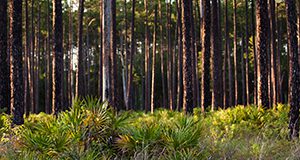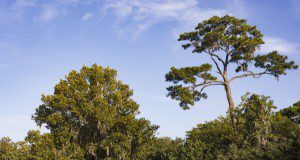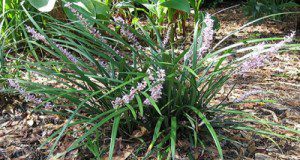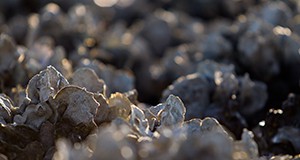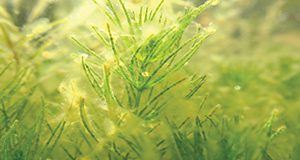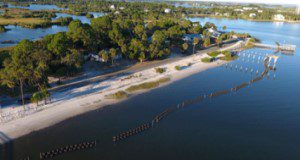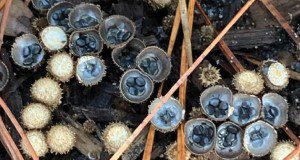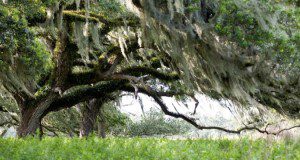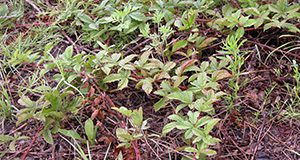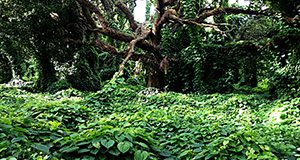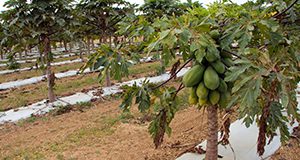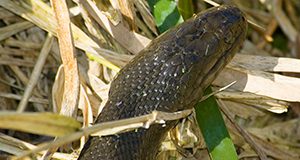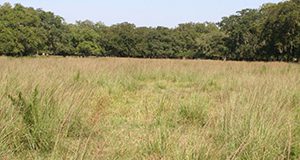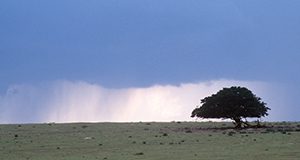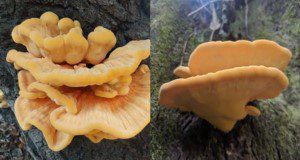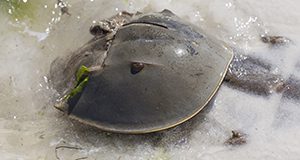Artificial reefs are constructed to provide several important ecosystem services to coastal communities and fisheries around the world, and their deployment results in significant socio-ecological and economic effects. To understand these effects, this document gives an overview of the agencies and people involved in the use of artificial reefs, how the implementation of these reefs influences their perception, and what issues are associated with their deployment. This document also specifically describes the process by which most artificial reefs are implemented in Florida.
https://edis.ifas.ufl.edu/fa231
Category: Ecosystems & Species
The Timber Value of an Existing Forest Stand
This 4-page publication presents a straightforward and intuitive approach based on compounding costs to determine the timber value of a forest at any stage of its development. Written by Andres Susaeta, and published by the UF/IFAS School of Forest, Fisheries, and Geomatics Sciences, March 2021.
https://edis.ifas.ufl.edu/fr435
Key Plant, Key Pests: Sycamore (Platanus spp.)
This series of Key Plant, Key Pests publications are designed for Florida gardeners, horticulturalists, and landscape professionals to help identify common pests associated with regional flora. This new 6-page publication of the UF/IFAS Environmental Horticulture Department helps identify the most common pests found on trees in the sycamore group, Platanus spp., and it provides information and general management recommendations for sycamore lace bug, bacterial leaf scorch, powdery mildew, anthracnose, and canker stain. Written by Matthew Borden, Kelly Laplante, Juanita Popenoe, Adam Dale, Caroline R. Warwick, and Brian Pearson.
https://edis.ifas.ufl.edu/ep601
Key Plant, Key Pests: Lilyturf (Liriope muscari)
This series of Key Plant, Key Pests publications is designed for Florida gardeners, horticulturalists, and landscape professionals to help identify common pests associated with common Florida flora. This new 4-page publication of the UF/IFAS Environmental Horticulture Department provides information and general management recommendations for leaf and crown rot, anthracnose, southern blight, scales, and root rot nematodes on lilyturf. Written by Juanita Popenoe, Caroline R. Warwick, and David J. Norman.
https://edis.ifas.ufl.edu/ep600
Oyster-Predator Dynamics and Climate Change
Oysters are one of the most important natural resources found in coastal and estuarine areas of Florida, but some Florida oyster populations appear to be declining. One possible driver of oyster population decline is increased mortality from oyster predators, including marine snails. But other environmental factors, such as changes in temperature or salinity, may also affect oysters. This 5-page fact sheet written by Gabrielle Love, Shirley Baker, and Edward V. Camp and published by the UF/IFAS School of Forest Resources and Conservation, Program in Fisheries and Aquatic Sciences describes how a changing climate may affect oysters directly but also indirectly by affecting their predators.
https://edis.ifas.ufl.edu/fa228
The Ecology of Charophyte Algae (Charales)
Charophytes are a group of green algae within the order Charales. This 4-page publication provides an overview of charophyte ecology, habitat requirements, and status in the state of Florida. Written by Maximiliano Barbosa, Forrest Lefler, David E. Berthold, and H. Dail Laughinghouse IV, and published by the UF/IFAS Agronomy Department, January 2021.
https://edis.ifas.ufl.edu/ag448
Living Shoreline Monitoring: How do I evaluate the environmental benefits of my living shoreline?
Living shorelines are structures made of natural materials such as oyster shell, sand, mangroves, salt marsh plants, and other organic materials built to protect properties from erosion. In addition to increasing shoreline stability, living shorelines enhance many valuable ecosystem functions. In this new 11-page publication of the UF/IFAS Department of Soil and Water Sciences, we provide homeowners, land managers, and Extension agents materials lists, protocols, and data sheets for measuring change in ecosystem function. Measuring and interpreting these measurements will help evaluate living shorelines projects as well as provide the foundation for monetarizing the value of these structures. Written by Laura K. Reynolds, Natalie C. Stephens, Savanna C. Barry, and Ashley R. Smyth.
https://edis.ifas.ufl.edu/ss694
Bird’s Nest Fungi: Charismatic Mushrooms in Your Garden
The “bird’s nest” fungi (Nidulariaceae) are charismatic mushrooms that look like small nests containing multiple tiny eggs. Because the ecological role of bird’s nest fungi is to decompose wood, they are extremely common in disturbed areas with plant debris and mulch, such as trails and backyard gardens. These fungi tend to grow in large clusters, so it is common to see ten to a hundred of these “nests” at once. Bird’s nest fungi are not considered dangerous to plants, animals, or humans. This new 3-page publication of the UF/IFAS Plant Pathology Department was written by Nattapol Kraisitudomsook and Matthew E. Smith.
https://edis.ifas.ufl.edu/pp361
Key Plant, Key Pests: Oak (Quercus spp.)
This series of Key Plant, Key Pests publications is designed for Florida gardeners, horticulturalists, and landscape professionals to help identify common pests associated with common Florida flora. This new 9-page publication provides information and general management recommendations for borers, caterpillars, insect-induced galls, twig girdlers, oak leaf blister, root and butt rot, Tubakia leaf spot, mistletoe, psocids, lace bugs, woolly aphids, powdery mildew, Spanish and ball moss, and lichens. Written by Juanita Popenoe, Caroline R. Warwick, Adam G. Dale, and Alfred Huo, and published by the UF/IFAS Environmental Horticulture Department.
https://edis.ifas.ufl.edu/ep596
Blackberry and Dewberry: Biology and Control
Blackberry and dewberry are often viewed as nuisance weeds that reduce grazing in a portion of the pasture. However, severe financial losses can occur if these growing thickets injure cattle. This 4-page document provides information regarding blackberry and dewberry management in pastures. Written by Brent Sellers, Pratap Devkota, and Jason Ferrell, and published by the UF/IFAS Agronomy Department, revised November 2020.
https://edis.ifas.ufl.edu/ag238
¿Perdidos en la maleza? Una guia exhaustiva de malas hierbas no autoctonas en Florida
Este artículo tiene como objetivo informar al público en general, administradores de tierras, investigadores, autoridades locales y estatales, y a todo aquel que busque orientación para acceder a listados de plantas no autóctonas en el estado de Florida, tanto normativos como no normativos. En este documento se explica el origen de las listas, el significado de la inclusión en una lista en concreto y la forma de acceder a cada una de ellas. Written by Deah Lieurance, Lyn A. Gettys, and Germán Sandoya-Miranda, and published by the UF/IFAS Agronomy Department, November 2020.
https://edis.ifas.ufl.edu/ag444
Programacion de Riego Basado en el Metodo de Evapotranspiracion Para Papaya (Carica papaya) en Florida
La papaya es un importante cultivo frutícola que se cultiva en el sur de Florida con un área estimada de 356 acres. Este documento se centra en las técnicas de programación de riego basadas en ET para la papaya en las condiciones de Florida. Written by Haimanote K. Bayabil, Jonathan H. Crane, Kati W. Migliaccio, Yuncong Li, Fredy Ballen, and Sandra Guzmán, and published by the UF/IFAS Department of Agricultural and Biological Engineering, November 2020.
https://edis.ifas.ufl.edu/ae547
Eastern Indigo Snake
Learn more about eastern indigo snakes!
The Wildlife of Florida Factsheet series was created to provide the public with a quick, accurate introduction to Florida's wildlife, including both native and invasive species. Authors Tyler Buckley and Raoul K. Boughton hope this 2-page quick guide and others in the series published by the UF/IFAS Department of Wildlife Ecology and Conservation will inspire readers to investigate wildlife in their own backyards and communities and understand the amazing biodiversity of wildlife in the state of Florida.
https://edis.ifas.ufl.edu/uw475
Smutgrass Control in Perennial Grass Pastures
This 4-page document provides an overview of smutgrass biology, control, and general recommendations. Written by Brent Sellers, Neha Rana, José Luiz C. S. Dias, and Pratap Devkota, and published by the UF/IFAS Agronomy Department, revised October 2020.
https://edis.ifas.ufl.edu/aa261
How Are Our Future Agriculture and Natural Resources Projected under Varying Climate?
This 8-page article explains how agriculture and natural resources may respond to projected future climate and how climate projections can be useful in developing management plans for the improved sustainability of Florida's agriculture and natural resources. It also aims to help increase the public awareness of climate change impacts on Florida and improve understanding of the connections among climate, agriculture, and natural resources. Written by Young Gu Her, Ashley Smyth, Zachary Brym, and Elias Bassil, and published by the UF/IFAS Department of Agricultural and Biological Engineering, September 2020.
https://edis.ifas.ufl.edu/ae545
Chicken of the Woods (Laetiporus sulphureus species complex)
Species in the Laetiporus sulphureus species complex, also known as “chicken of the woods” mushrooms, are wood-decay fungi that cause brown rot within the heartwood of their tree hosts. The common name “chicken of the woods” is given to some species in this group because they are tasty edible mushrooms. Several Laetiporus species have been harvested to use as food colorants, to dye natural products such as wool, and for human consumption. This new 4-page publication of the UF/IFAS Plant Pathology Department, written by Brianna Benitez, Claudia A. Paez, Matthew E. Smith, and Jason A. Smith, describes these fungi as well as their ecology, management, and potential edibility.
https://edis.ifas.ufl.edu/pp358
A Beginner’s Guide to Water Management—Common Aquatic Birds Using Florida Lakes
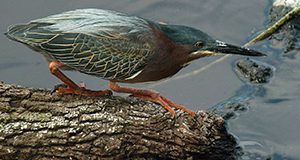
Florida LAKEWATCH is a citizen scientist program that monitors Florida's lakes. Since it was established in 1991, Florida LAKEWATCH has worked with thousands of volunteers to collect water quality data on more than 2,700 aquatic systems in Florida. It is the most comprehensive and longest-running water quality data source in the United States, if not the world. This 18-page circular written by Mark V. Hoyer and published by the UF/IFAS Program in Fisheries and Aquatic Sciences of the School of Forest Resources and Conservation describes Florida LAKEWATCH's volunteer aquatic bird-monitoring program. Citizen volunteers can provide a comprehensive and intimate understanding of birds and their interactions with Florida lake systems, helping to detect the changes in the types and numbers of birds using lakes that may indicate important natural or human-caused environmental trends. Whether you want to identify birds you’ve spotted or take an active role in the management and conservation of Florida's natural resources, this circular can help you learn the basics.
https://edis.ifas.ufl.edu/fa229
The American Horseshoe Crab (Limulus polyphemus)
American horseshoe crabs (Limulus polyphemus) look prehistoric and in fact really have not changed very much in the 200 million years they have been around. This 3-page fact sheet written by Savanna Barry, Holly Abeels, and Shelly Krueger and published by the UF/IFAS Program in Fisheries and Aquatic Sciences, School of Forest Resources and Conservation tells the story of these interesting and valuable “living fossils,” including their importance both to ecology and human medicine. It provides tips on how to find horseshoe crabs and a few ways you can help them.
https://edis.ifas.ufl.edu/sg190
Peters’s Rock Agama in Florida

Florida has experienced more introductions of nonnative reptiles than any other region on Earth. Approximately three times as many species of established, nonnative lizards live in the state as do native species. This 5-page fact sheet written by Kenneth T. Gioeli and Steve A. Johnson and published by the UF/IFAS Department of Wildlife Ecology and Conservation provides background information about the visually striking Peters's rock agama, including information about its introduction to Florida, as well as its biology, conservation issues, and management recommendations.
https://edis.ifas.ufl.edu/uw476
Urban Tree Selection for Diversity
Urban tree diversity is important when attempting to create a healthy, beneficial, and resilient urban forest. Having a variety of trees can increase the aesthetic value for residents and create habitats for plants and animals. Some common street trees currently in the landscape are not site-appropriate and create infrastructure damage. By planting different types of trees in these locations, maintenance costs and infrastructure damage can be reduced and tree longevity increased. This new 4-page fact sheet is intended to provide urban foresters, arborists, landscape designers, and others in charge of tree planting with a process for introducing new species into the urban environment. Written by Deborah R. Hilbert, Andrew K. Koeser, and Robert J. Northrop, and published by the UF/IFAS Environmental Horticulture Department.
https://edis.ifas.ufl.edu/ep589
